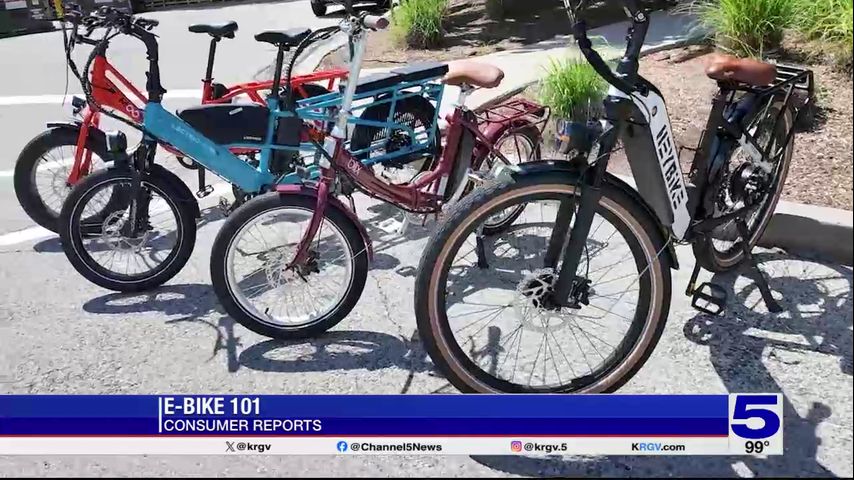Consumer Reports: E-Bike 101
Electric bikes—or e-bikes— can make riding a bike a breeze. But buying a new e-bike might not be so easy on your budget -- with some models costing over 10,000 dollars!
Consumer Reports is here to help, breaking down the options and revealing top picks from its latest tests.
From horns and whistles to turn signals and extra cargo space, e-bikes offer plenty of features. And they’re a great option for many different lifestyles.
Consumer Reports' Rich Handel explains, “There are generally two reasons people buy an e-bike: either they’re getting back into biking, and it’s helpful getting over those hills or flattening the hills, or they’re using it to commute, and it’s replacing a vehicle.”
There are two main types of e-bikes: pedal-assist bikes have an electric motor that kicks in when you pedal. The other uses an electric motor plus a throttle that gets the bike going without any pedaling.
While you can find e-bikes for a few hundred dollars, the top-performing models in Consumer Reports’ tests typically run between $2,000 and $3,000.
CR’s tests look at how far you can get with them before the battery dies, acceleration, hill-climbing, speed control, braking, of course, and then we take a look at how well the bike performs when the battery dies.
For commuting, the Heybike Cityrun for $1600 has an electric throttle and a battery with a 29-mile range.
The Lectric XPedition for $1,750 offers more cargo space and features that mimic a car, including a headlight, a brake-activated taillight, and turn signals.
For recreational biking, consider this Raleigh RetroGlide Royale 2.0.
CR also says E-bikes have a learning curve, so it’s a good idea to read the manual and practice in a safe area until you get a feel for your bike!
And finally -- no matter which type of bike you’re riding, CR says always wear your helmet!




